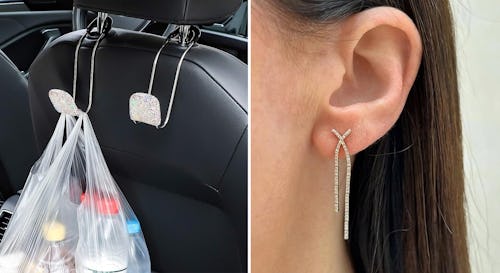In this post, weíll talk about Amazon reviews for your products. Weíll cover how to get them legitimately, how to grow your review numbers, and most importantly, what to avoid, so you donít get in trouble with Amazon. The...
In this post, weíll talk about Amazon reviews for your products. Weíll cover how to get them legitimately, how to grow your review numbers, and most importantly, what to avoid, so you donít get in trouble with Amazon.
The Amazon Review Ecosystem in 2022
Amazon reviews are one of the most important parts of their entire ecosystem, and they are the most significant indicator of trust when it comes to buying things. Reviews also help accelerate the Amazon flywheel effect. The more ratings and reviews a product has ó especially higher ratings ó the more likely it is to be ranked on Amazon when someone searches for a product or a set of keywords.†
Since Amazon introduced these elements, sellers and brands have succeeded in manipulating the system. Either to pad their reviews or to leave bad reviews on their competitorsí sites. There are several ways that brands have gamed the system to help elevate their brands, including unverified purchase reviews, exchanging free products for good reviews, and reimbursement. However, Amazon does keep an eye on all these things to protect the integrity of the platform.
At first, you didnít even need to purchase a product on Amazon to leave a review! This is called an unverified purchase review, and for the most part, these are no longer available. Occasionally you can leave an unverified review, but youíll see Amazon denotes and verifies purchases as you browse the reviews. Verified reviews are likely ranked higher on Amazon than unverified purchase reviews to ensure fair and unbiased reviews.†
Another common practice to game the review system was to give away products for free or at a heavily discounted rate in exchange for a positive review. This is still in play; however, now there are restrictions on how much of a discount you can give. If you exceed the allotted amount, the reviews wonít count toward your productís review rating. One of the most recent ways companies have started to get around this is to offer reimbursement off the platform. Companies can connect with a customer to write a review, and once they do, they will be reimbursed via Venmo or PayPal.†
If a customer writes a negative review, some brands will connect with them to ask them to change their review. This goes against Amazonís terms of service, so they can get in trouble if they get caught. At the end of the day, you want to trust the reviews that you read without worrying that they arenít truthful.
Itís important to remember that Amazon constantly reviews the seller ecosystem to understand whatís happening. They are aware of the tricks that sellers try to pull, and theyíve put different layers of security and guidelines in place over the years to prevent this. Now, theyíre starting to attack the source of review manipulation to eliminate these practices once and for all.†
5 Tactics for Getting Reviews AND Being Compliant With Amazonís Terms of Service
Now that you know how not to get reviews on Amazon, what are some ways that you can get authentic reviews? Here are five tactics that wonít violate Amazonís terms of service, starting with Amazon Vine.
Amazon Vine Program
Amazon Vine allows you to give away your product in exchange for a review, and you can give away up to 30 products per parent ASIN. It goes to a pool of reviewers that Amazon has, so you donít get to choose who leaves these reviews. Customers have a set time to leave a review, and typically these reviews average four to five stars. They got the product for free, so they will leave a positive review as long as itís a good product. This is a great way to get initial reviews on your newer listings. Or increase reviews on older ones that donít have many. You can get your listings up to 30 reviews by participating in this program.

Previously Amazon Vine was a Vendor Central review program only; however, it recently moved to Seller Central. It requires†Amazon brand registry†to participate in. This program used to be free, but in the fall of 2021, Amazon started charging $200 per parent ASIN to participate. This fee does not include the product you need to give away. However, itís a steal if youíre struggling to get reviews. Professional reviewers often use emoticons and images in their reviews, so they are high-quality and a great value if you can afford to participate.†
Leveraging Your Existing Customer & Fan Base for Reviews
If youíve been around for a while, you likely have a loyal fan base, so blast the request for reviews using your existing email list and social channels. This works whether itís a newly launched product or a long-time favorite. You donít even need a hook Ė just ask! Your existing supporters are often happy to help you. Remember, you canít give out discount codes in exchange for a positive review. The goal is to increase your review numbers with legitimate, unbiased reviews.†
Asking Customers for Reviews
After customers purchase your product, give them time to use it and proactively ask them to leave a review! There are a few different ways to do this, but letís talk about the two most common: sending a message yourself or having Amazon send a message on your behalf.
First, you can message customers through Amazonís buyer-seller messaging service. You can only send the message once per transaction, and you cannot ask them to leave a positive review. However, you can politely request that they leave a review on your product. Itís up to them if they want to. Keep in mind that this program may be phasing out as they put more limits on what you can say, how many times you can contact customers and more.
Amazon also has a request review button associated with each order. When you click that button, Amazon automatically sends a message to the customer asking them to leave a review. This message is autogenerated, so you donít have to worry about violating any terms of service.
Responding to Negative Reviews

Bad reviews happen, especially if youíre trying to boost your numbers by connecting directly with customers. If you get a one- or two-star review, youíll likely want to respond to those customers. Previously, you could leave comments directly under reviews to help resolve the issue; however, these responses would often get lost. It wasnít an effective way to connect with your customers. Now, using the brand dashboard, you can message customers directly to address their concerns and resolve their issues. This isnít always easy to do, and if youíre looking for guidance on what to say,†hereís an 8-minute overview on responding to negative Amazon reviews.†
As you navigate the situation, remember that you cannot ask customers to change their reviews. Amazon will know if you do since itís their ecosystem. All you can do is provide excellent customer service, replace any damaged or defective products, or offer them a refund. Work with the customer on their ideal resolution, whatever it may be. And just hope they do the right thing and update the review independently.
Using Variations to Improve Star Ratings & Number of Reviews
When listing your products, itís important to consider your strategy. Particularly if you have variations such as sizes, flavors, colors, and pack quantities. You can either split these up or combine them to alter your reviews. They will average together for a new rating.†
For example, if youíve got one product with a two-star rating and another similar product (maybe a different flavor, for example) with a five-star rating, if you combine them, youíll get a new average rating of 3.5 to 4 stars, though the final rating will depend on many factors. Consider your options carefully and use your best judgment to maximize your reviews and ratings. Itís different for every product and listing. But if they are similar enough, this could be a quick and easy way to boost your scores and rank higher on the algorithm.†
Try using some of these strategies to help you get reviews trending in the right direction, all while staying above board with Amazonís Terms of Service. Reviews are what will drive sales. If your product has none, customers donít know if they can trust it Ė or you Ė to deliver.†
Recent Changes in the Amazon Review Ecosystem
Amazon has taken some big steps recently to combat the fraudulent review ecosystem. In early 2022, they sued two sites that helped facilitate these unethical reviews and improper refunds. They also sued the administrators of more than 10,000 Facebook groups who tried to circumvent the Amazon ecosystem to get more reviews in July 2022. These groups connected brands and sellers directly with customers in exchange for positive reviews.†
With these initial lawsuits, Amazon is sending a clear warning to their entire ecosystem to adhere to their terms of service. Because they left it unchecked for so long, itís become a big problem thatís now worth their time and attention. This is just the beginning, and many are wondering where they will turn their attention next, including if they will start targeting sellers.
Regardless, nowís a good time to ensure youíre using legitimate tactics to drive reviews. If your brand has used any fake review sites in the past, itís time to stop and clean up your act before itís too late and Amazon targets your brand.
How These Tactics Triple Review-to-Order Ratios
Depending on your bandwidth, you can manually respond to each or use software to automatically message your customers and ask them to leave a review. It has to be honest, so be careful of the language you use when messaging customers directly.†
Most brands donít realize that you can grow your reviews, and influence your review rating, by responding to negative reviews. You can use the respond to reviews link to message customers directly if you have a brand registry. If you connect with those who leave a one-two-or three-star review, youíll be able to review and address their concerns as necessary. By providing great customer service, you hope they will change their review rating into a positive one.†
Remember, consumer psychology is key here. If you see a brand go above and beyond to remedy a negative review, it instills consumer confidence. Turning around one negative review can have a halo effect on your brand for years, thanks to how Amazon prioritizes displaying certain reviews on a product listing.
These tactics and strategies can†double†or even†triple†a brandís†review-to-order ratio. That means a product receives reviews 2 to 3 times more frequently after implementing these strategies. This is huge when competing against other sellers in a category. When youíre able to get reviews at a faster pace than them, itís going to help you win in the long term on Amazon.
Not sure if your Amazon review strategy is all it can be?
Book a call to discuss with one of our Amazon experts!
The post How to Get More Reviews on Amazon appeared first on Charmac.
















